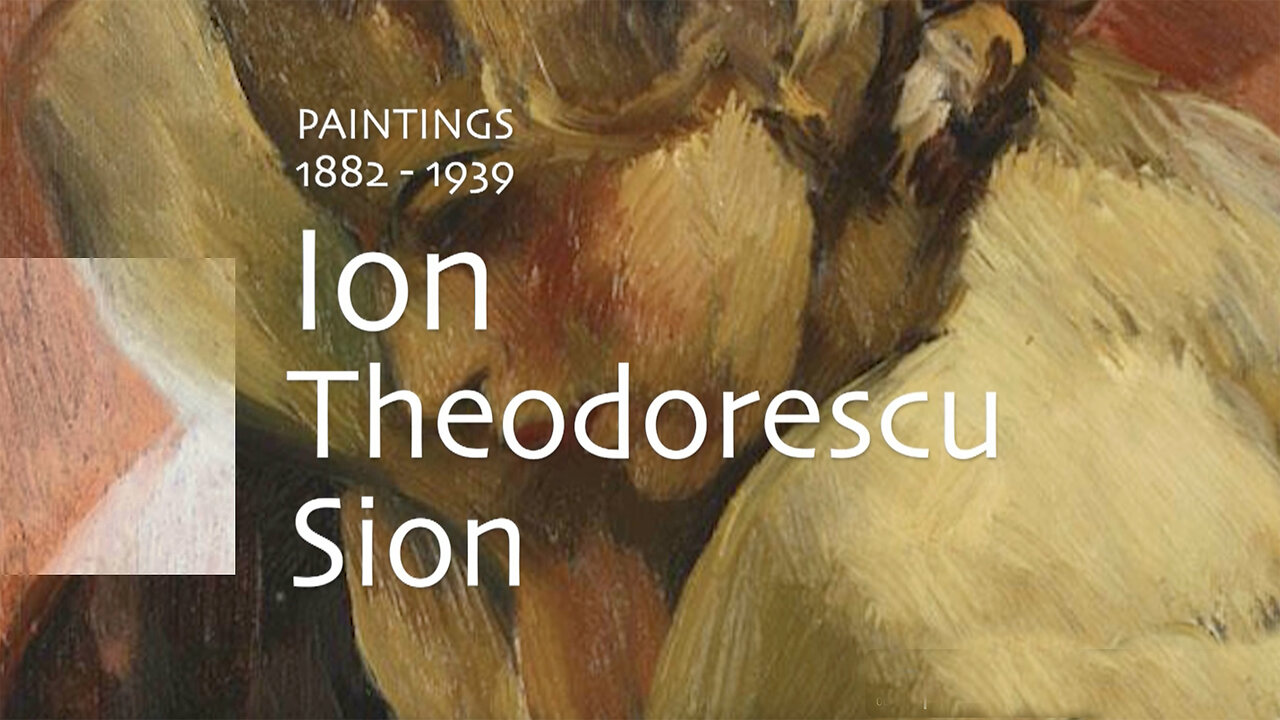Premium Only Content

Ion Theodorescu-Sion Paintings (1882 - 1939)
Ion Theodorescu-Sion (Romanian pronunciation: [iˈon te.odoˈresku siˈon]; also known as Ioan Theodorescu-Sion or Teodorescu-Sion; January 2, 1882 – March 31, 1939) was a Romanian painter and draftsman, known for his contributions to modern art and especially for his traditionalist, primitivist, handicraft-inspired and Christian painting. Trained in academic art, initially an Impressionist, he dabbled in various modern styles in the years before World War I. Theodorescu-Sion's palette was interchangeably post-Impressionist, Divisionist, Realist, Symbolist, Synthetist, Fauve or Cubist, but his creation had one major ideological focus: depicting peasant life in its natural setting. In time, Sion contributed to the generational goal of creating a specifically Romanian modern art, located at the intersection of folk tradition, primitivist tendencies borrowed from the West, and 20th-century agrarian politics.
Initially scandalized by Theodorescu-Sion's experiments, public opinion accepted his tamer style of the mid to late 1910s. Sion was commissioned as a war artist, after which his standing increased. His paintings alternated the monumental depictions of harsh environments, and their inhabitants, with luminous Balcic seascapes and nostalgic records of suburban life. Their search for visual concreteness was a standard for the Anti-Impressionist emancipation of the Romanian artistic scene in the interwar period.
By the mid-1920s, Sion's style became a visual component of the Neo-Traditionalist, "Romanianist" and neo-Byzantine current formed around Gândirea literary magazine. In the years before his death, the emergent avant-garde was voicing criticism of his new stylistic and ideological choices. Sion's oscillation between modernity and parochialism, his flirtation with authoritarian politics, and the eventual decline of his work endure as topics of controversy.
The son of a Romanian Railways brakeman and the peasant-woman Ioana Ursu, Theodorescu-Sion was born in Ianca, Brăila County, and baptized into the Romanian Orthodox Church. On both sides, his family had origins in Transylvania's Apuseni Mountains and the Breadfield, regions at the time still part of Austria-Hungary; by popular account, some were Moți, that is to say ethnic Romanian herders with a distinctly rustic lifestyle. Ion spent his early childhood on the Bărăgan Plain, but grew up into a passionate hiker of the Carpathian Mountains.
In 1894, having attended primary and secondary school in the Danube port of Brăila, the boy left for Bucharest to study at the National School of Fine Arts, and graduated in 1897. From 1904 to 1907, with a Ministry of War scholarship to his name, he traveled to France. Sion consequently enlisted at the École nationale supérieure des Beaux-Arts, studying under academic masters Jean-Paul Laurens and Luc-Olivier Merson. He was a rebellious student, shaped by socialist ideas, and squandered his scholarship money.
-
 3:08:48
3:08:48
Right Side Broadcasting Network
5 hours agoLIVE REPLAY: President Trump Participates in First Cabinet Meeting - 2/26/25
86.6K16 -
 LIVE
LIVE
Simply Bitcoin
2 hours ago $0.71 earnedNEW REPORT PROVES This Bitcoin Bull Run is DIFFERENT!! | EP 1191
213 watching -
 LIVE
LIVE
The Charlie Kirk Show
1 hour agoJudges vs. The People + Is DOGE Enough? + Fort Knox | Rep. Roy, Glenn, Plume, Posobiec | 2.26.2025
4,368 watching -
 2:39:35
2:39:35
The White House
3 hours agoPresident Trump Hosts First Cabinet Meeting, Feb. 26, 2025”
36.4K22 -
 58:16
58:16
The Dan Bongino Show
4 hours agoShake-Up In The White House Press Room (Ep. 2431) - 02/26/2025
751K911 -
 1:00:00
1:00:00
The Rubin Report
3 hours agoDem Looks Visibly Angry as Stephen A. Smith Points Out Failures to His Face
59.7K25 -
 DVR
DVR
Benny Johnson
3 hours ago🚨 Trump's First White House Cabinet Meeting LIVE Right Now | Massive News Breaking
74.1K53 -
 2:05:04
2:05:04
Steven Crowder
5 hours agoTrump Keeps Delivering | This Week’s 3 Big Wins Explained
447K201 -
 LIVE
LIVE
Flyover Conservatives
2 hours agoProphecies | Breakthrough, Zelensky and 2040 - The Prophetic Report with Stacy Whited
1,375 watching -
 2:02:44
2:02:44
LFA TV
17 hours agoFLUSHING THE TURDS! | LIVE FROM AMERICA 2.26.25 11AM
52.4K10